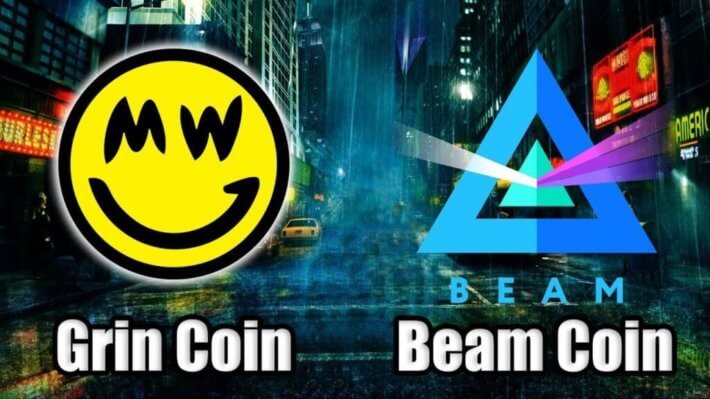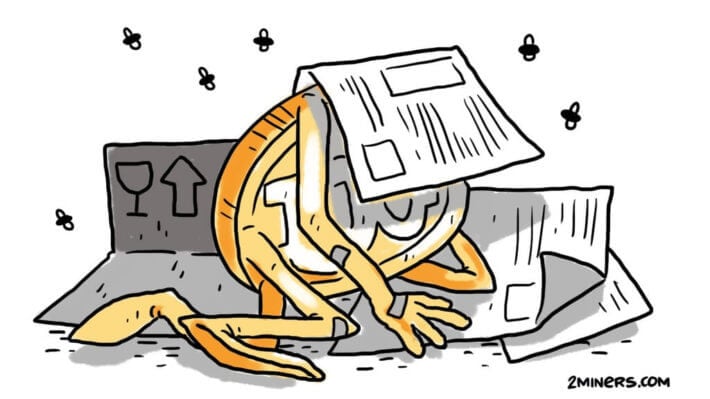
2019-5-6 20:47 |
Grin and Beam are both open-source implementations of MimbleWimble, a protocol that offers enhanced privacy and high speeds. Although both launched in January 2019, the projects operate with vastly different goals and operations.
On the surface, Grin and Beam are quite similar: both coins have no addresses and data storage is minimal, making the blockchains extremely light-weight, scalable and fast. Neither had a pre-mine or ICO, which many investors consider to be red flags. They both conducted fair proof-of-work launches, with the philosophy that a currency must be confidential to become widespread.
Grin’s market capitalization is currently more than double that of Beam, but that doesn’t make it a more successful project. Both projects have subtle nuances in technology and governance that could provide formidable advantages down the line.
Grin: The Community CryptoGrin has been under active development since 2016, thanks solely to community donations and volunteers. On the other side, Beam came into the industry in March 2018 after raising $5M in venture capital funds. Grin has a community developed ethos that cherishes the fact that their project was founded anonymously (just like Bitcoin). Beam prefers to take more of a traditional start-up approach with team-focused development.
Grin’s development goals and targets are set during bi-weekly developer and community calls, in which anyone can join and add items to the agenda. This has garnered the attention of many Bitcoin maximalists, noting the similiarities with BTC’s early days. Grin development focuses more on providing the greater community with the developer tools to build the products that they want.
Beaming ForwardWhile Grin development continues to be volunteer-led, Beam has plans to set up a Foundation which takes 20% of each block reward to fund future development, marketing and strategies. This is a similar model to ZCash.
Being structured as a traditional start-up allows Beam to ship code and make decisions faster, hire employees, and bring on a dedicated sales and marketing team that is focused on Beam adoption. This team attends conferences and builds relationships with merchants to develop things like Beam-specific payment processors. At this point, Beam has delivered more community-oriented product suites, such as a user-friendly wallet, while Grin still relies on a command-line wallet.
Which coin is better?This is a difficult question to answer, but we can compare the two coins in a few salient categories:
Funding Model: This is a toss up, because on one hand Beam’s Foundation model and VC raise ensure future funding to support a large team. At present, their team team has more than 20 paid professionals. At the same time – Grin’s community focused funding model has onlookers feeling nostalgia thinking back on the early days of Bitcoin. We’ll chalk this one up as a tie.
Ethos: This is a start-up model (Beam) vs. community-driven (Grin) model here. We’’ll have to give the edge to the Grin’s model, since most of the crypto community tends to side with the “anti-establishment” folks.
Usability: Beam currently has desktop wallets for every platform you can think of, while Grin is just starting to ship wallets that offer something other than command-line code. Beam has a clear advantage.
Speed-to-Market: Beam started developing their project more than 2 years after Grin, and they launched several weeks earlier… with many more user-friendly tools. The start-up model is a clear winner for being much quicker.
Decentralization: Grin displaces decision-making among anyone and everyone that wants to be involved. There is no loyalty to investors or advisors, and the project seems to have no single point of failure, especially since the founder is anonymous. Advantage Grin.
Governance: This is a tricky topic in crypto. On one hand, Beam has an incredibly talented team in which each member is likely qualified to give their two cents in a governance conversation. On the other side, anyone can partake with Grin, which makes it closer to what crypto-traditionalists want to see. This one is a close tie.
Mining: Beam uses a memory-hard proof-of-work algorithm called Equihash, which has had vulnerability issues with Bitcoin Gold and ZenCash. Grin uses a blended algorithm based off of the Cuckatoo Cycle, which uses two algorithms: one is ASIC-resistant, and the other is ASIC-friendly. Advantage Grin.
Innovation: Beam has a more comprehensive roadmap and they’re delving into things like atomic swaps and integrating Lightning. Grin focuses on slow needs-based development. Beam wins here.
This isn’t the most rigorous way to evaluate two cryptocurrency projects, but it should offer an informative introduction to those who are unfamiliar with the two MimbleWimble tokens.
Both projects are competing to offer the best privacy-by-default payment cryptocurrency, but this competition is good-natured, and they seem to act as though they’re on the same team. Beam actually partially funded a code audit for Grin before it launched, citing that audits done on MimbleWimble were important for both projects.
For now it seems like the competition between Grin and Beam can be boiled down to their operating models; one company operates as a start-up and the other as a community. Choosing a winner on these grounds is a subjective exercise, and unlikely to be conclusive.
Despite the hype surrounding each of their launches, the coins are both down more than 10% in their price in the last quarter while the industry has been on the rise. Given that neither project has yet demonstrated a clear advantage, we might have to wait for a rematch.
Better luck next time
The post Beam Vs Grin: Who’s Nimble At Mimblewimble? appeared first on Crypto Briefing.
origin »Beam (BEAM) на Currencies.ru
|
|


